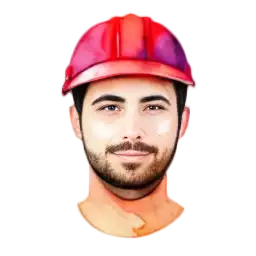What to finish a house made of clay adobe?
The walls of the house from clay adobe, what kinds of decorative finishing materials can be used to finish the house? Finishing technology?
Answers
A house made of adobe is quite an interesting construction, the materials for construction require a minimum, if you do not take into account the physical labor, which should be oh so much.
The advantages of thermal and noise insulation, the wood for heating purposes consumes even less than wood, and if the shoot around the corner will begin unlikely to hear.
The disadvantages are its openness to the world, it must breathe, since the main composition of clay, which is hygroscopic, which is the ability to collect moisture, but it is difficult to return it. If only the house does not breathe, it begins to get wet and very quickly falls into disrepair. Typically, these houses are simply whitewashed, cladding them with anything makes no sense, there is nowhere warmer.
Inside, I think allowed to plaster, the same clay mortar for leveling and sticking paper wallpaper. But in no way cement or cellophane-plastic.
Saman blocks are made from clay (or rather from clay soil), straw (optionally) sand and water. That is, we are talking about natural and environmentally friendly materials.
Saman blocks are relatively inexpensive building material and those same blocks can be made yourself. To determine the exterior finish should take into account the following:
Saman used to build walls because of its availability (cheapness), or are we talking about environmentally friendly construction using natural materials.
It is also necessary to consider that adobe is actively absorbing moisture and this building material needs to be protected.
When building a house like this you need to pay attention to the roof overhangs (eaves, this protruding beyond the boundary of the wall part of the roof). Water should not run down the walls of the structure. Plus you need to pay attention to the drainage system (gutter), to make the perimeter of the structure, etc. As for finishing, if we are talking about ecological construction, the walls can be plastered and then whitewashed at the finish. This is a variant of finishing of adobe houses used under the Soviet Union.
Plaster can be used lime and clay with the addition of straw (this is an option, there are others). The adobe can be plastered and a "coat" can be sketched on the finish. Or plaster and paint (you need facade paints). If adobe is used as a cheap building material and you want to see your building with a more modern finish, you can clad such a house with thermopanels.
Although it is necessary to take into account whether it is necessary to insulate additionally a house from adobe, usually this building material is used in regions with a mild and dry (relatively) climate, and the thickness of the walls can be different.
It is also possible to wrap the adobe house with siding or use facade tiles.
A more expensive option, to clad the adobe house with a brick. The brick is laid under the expansion with a small distance from the walls. To lay a brick not under the grouting and then plaster it is not quite logical in this case.
If we're talking about interior decoration, it's plaster and whitewash. Or stucco and paint. A more expensive option, the combined interior decoration with natural stone and paint. You can glue wallpaper, you can apply decorative plaster, etc.


